By Steve Novotney
Weelunk.com
It’s always been there during my lifetime, and I’ve passed by it, on foot or in a vehicle, thousands of times without even thinking about what takes place within its walls. It was the steel building; that’s what I knew. That’s what we all knew.
It’s always been the tallest at 12 floors, and it’s always been the only one with heated sidewalks, the row of bagged-lunch-eating men during the noon hour, and the only one designed in an ‘H” design. Most people believe steel built the structure because of its extended history with the industry, but it was beer that built the building in 1907.
Schmulbach Beer, that is.
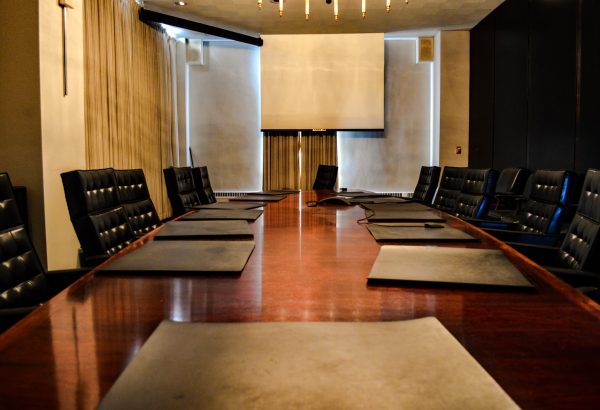
It was not until the late 1940’s that Wheeling Steel officially purchased the structure. By then, its innards at 1134 Market Street housed more than 500 employees who worked in more than 30 different departments during all hours of every day of the week. The mail chute is on every floor, ladies used to operate the elevators, and the rear entrance and the freight elevators always have been available to those in need of level access.
The company merged in 1968 with Pittsburgh Steel, but even if you were not employed by Wheeling-Pitt, you still could walk into the Market Street entrance of the building if you needed a Pittsburgh or New York City newspaper sold at the newsstand on the left or a trim and/or shave at the barbershop on the right. There were also shoe shines and a restaurant available in the basement.
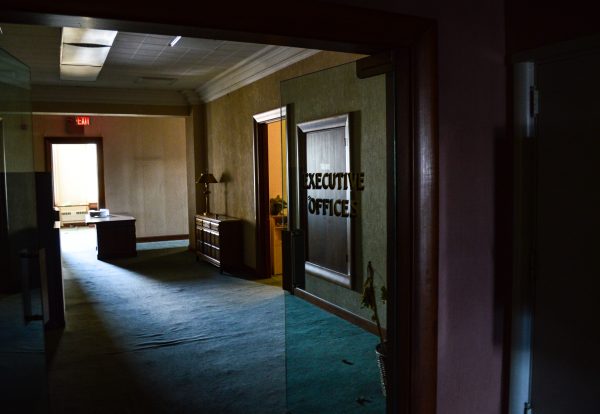
The higher the floor, the nicer the offices, and the top level offered the most-powerful executives suite-like accommodations that boasted visual views of the Ohio River as valley-made steel floated south for delivery while this company played a pivotal role in building America. At Wheeling-Pitt’s peak, more than 30,000 employees at six facilities in East Ohio, Pennsylvania, and the Northern Panhandle earned a living making, shaping, and coating steel.
Now, not only does the former Wheeling-Pittsburgh Steel Building sit silent in downtown Wheeling, but so does most of the rest of the valley’s legendary steel industry. It was a slow death, really, but one that persistently provoked angst among employees and retirees, strike after strike and sale after sale.
Following a 1985 bankruptcy, the company reorganized in 1994 under WHX Corp., then declared bankruptcy again in 2000. Esmark represented a possible savior in 2007. A 2008 sale to Severstal was considered a deal with the devil from Russia, and when RG Steel acquired the properties with the all-important, “order book,” most feared the worst, which is exactly what took place. Each ownership change had led to a reduced steel-making workforce with diminished benefits. After RG filed for bankruptcy in 2012, next to nothing was left but lonely, red-painted warehouse buildings, rotting docks, high weeds, and mere remnants of the “strike shacks” used toward the end.
The coking facility still emits its odors of commerce in Follansbee, and Esmark repurchased the Yorkville coating plant after the RG bankruptcy, but no longer are there steel yards in Mingo Junction or Steubenville, and no longer are regular union meetings held at local halls. The Ohio Valley’s steel culture, one once stoked by a bought-in public and a vibrant local economy but also marred by abuses by both management and labor, survived its last three decades mostly because of government-supplied life support via legislative protections and funding assistance.
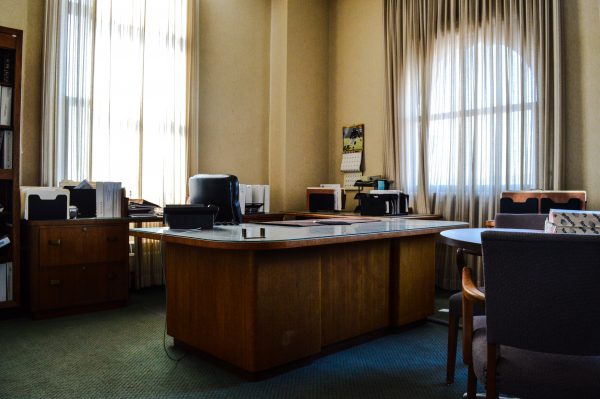
But that’s all gone now, and steel is dead here.
The declines in downtown districts in Steubenville, Weirton, Follansbee, Yorkville, Martins Ferry, Wellsburg, Bellaire, and Wheeling are directly linked to the fall of the region’s manufacturing industry. Blame has been placed on free-trade agreements, global-market pricing, and a “greed-over-quality” mentality, as similar stories played out in cities in the Rust Belt and across America. Now in Wheeling we don’t even talk about steel anymore unless we’re dining at Later Alligator in Centre Wheeling and admiring owner Susan Haddad’s collection of Wheeling-Pitt company history.
In Wheeling there’s really no reason to talk about steel anymore because there’s no longer the constant come-and-go at the Wheeling-Pittsburgh Building along Market Street, and inside the headquarters now many desks appear as if employees just up-and-left the moment they received their layoff notices in January 2013, leaving behind the files and paperwork and even cups of coffee on their desks for whoever was in charge of that final cleansing wipe.
The building is owned today by Access Infrastructure, LLC, a real estate investment firm based in Columbus, Ohio and eager to join the downtown’s resurgence. Two floors – the fifth and the seventh – currently are being marketed to prospective tenants because those are the lone two that are up to current building and safety codes, and that’s precisely where the “ifs” and the “whens” come into play.
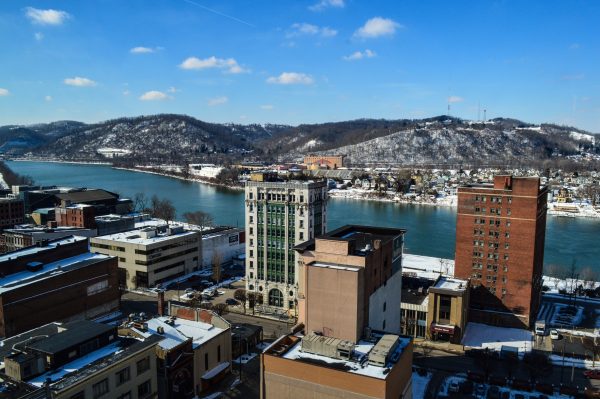
If a company finally decides to be the first to relocate to the structure, that’s when Access will begin upgrading other areas. It’s about demand and creating even more supply. And why shouldn’t it be right now in downtown Wheeling? There are the Stone Center, the Horne’s Building, and the Professional Building among others with available office space. While downtown residential owns the current buzz in Wheeling, the possibility of skyscraper becoming the home of anything other than a commercial operation is slim.
Could be done? Of course it could, but at this time it doesn’t seem to be worth the investment.
A walk around each of the floors offers a lot of answers to questions we’ve always had, and it provokes many more queries about the carpet colors, the doorknob fixtures, how office furniture designs changed between the 1950s and the early 2000s, and how busy the hallways must have been once-upon-not-that-long-ago. Unlike many vacant buildings in downtown Wheeling today, the lights work, the plumbing flushes, the dropped ceilings remain in place, and it is mostly move-in ready.
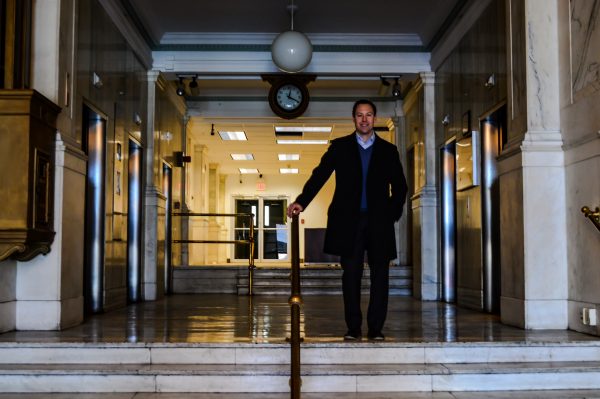
Awaiting the First.
It’s not the question of “if” but “when”?
Jay Goodman of Harvey Goodman Realtor sold the building to Access Infrastructure for $800,000 in June 2013, and he has guided potential clients on tours during each month since.
Nine dollars a square foot. That’s the price. And it’s a pretty good price.
“When I show the building now, I show people the fifth and seventh floors because those are the one that are most recently updated with fire suppression systems and are ADA compliant,” explained Jay Goodman of Harvey Goodman Realtor. “But the entire building is available. If we have someone who needs four floors and 30,000 square feet, they can do that.
“The fifth floor of the building right now really shows the potential for all of the floors because of the way the space can be utilized. It really displays the potential for whatever kind of company may be interested,” Goodman said. “Once you walk in, you are able to envision so many different things because the exterior of the building doesn’t allow you an idea of how it’s all laid out on the inside.”
The 10 other floors only need up-to-code fire suppression systems added and minor renovations to provide ADA-compliant restrooms, and performing those upgrades, Goodman confirmed, is part of the plan once demand is present.
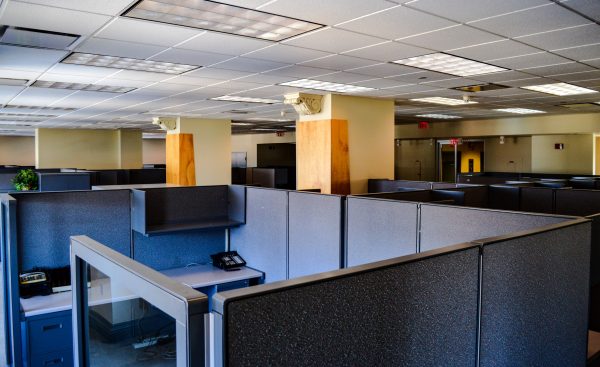
“Once one floor is leased, work on another floor would begin,” he said. “The building, considering its age, is in great shape with only some minor things that need to be performed to make more space available.
“I receive a few calls a month about the building right now, and I probably show it about every six weeks or so,” Goodman explained. “There have been law firms, larger insurance agencies, professional service-based businesses, and some new businesses, and there have been a few existing businesses in the downtown that are looking to expand their operations in the future.”
The McLure Hotel, the Vagabond Kitchen, and the Metropolitan Citi Grill are only a few footsteps from the building’s front doors, and a large parking lot, the Panda Chinese Restaurant, Vocelli’s Pizza, and Subway are across Market Street. Three banks operate in close proximity, the federal courthouse and post office are directly behind the Wheeling-Pittsburgh Steel Building, and a CVS pharmacy is located in a neighboring building.
“It doesn’t get much more central than this building in downtown Wheeling,” Goodman said. “It’s right off the interstate, a state highway travels right past the front doors, it’s next to the federal courthouse, and it’s surrounded by amenities that most company leaders are looking for in a new location.
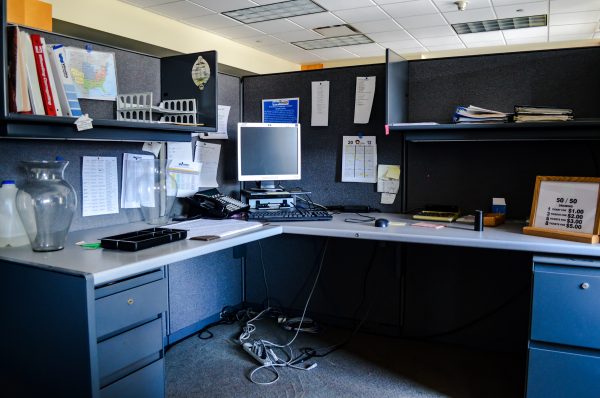
“There is not attached parking, but there’s plenty of parking across the street from the main entrance, there’s a parking garage on Chapline Street that’s a short walk away, and there’s other parking available, too,” he said. “Parking hasn’t been an issue when showing it before because there are plenty of options.”
The issue, explained Goodman, is signing the first client.
“We have reached preliminary negotiations before, but then we didn’t get past that point because they didn’t want to be the first one in,” Goodman reported. “We do our best to satisfy whatever concerns because there are a lot of things that are possible, but an empty building is an empty building.
“We can staff it part-time, and we could offer a number of incentives for being the leaser for the building, but there is other office space in Wheeling, too,” he continued. “We are confident that as soon as the first company signs, the rest of the building will become much more attractive.”
Goodman has several listings in Wheeling’s downtown and Centre Wheeling areas, and during the past year he has been busy showing space after space thanks to a renewed interest. The downtown district, in fact, has realized several recent agreements.
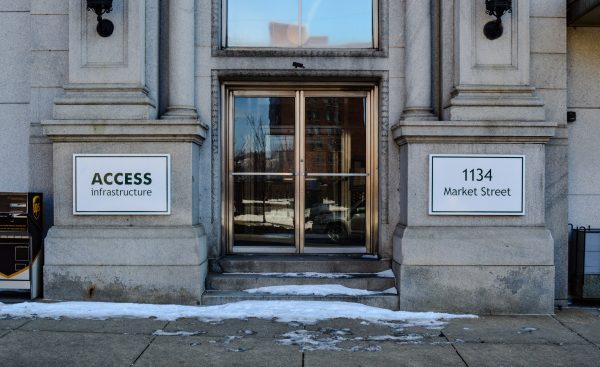
“The biggest challenges are still ahead of us, and that’s signing that first lease, but I have been on the job for less than a year and there’s interest,” Goodman said. “I’m hopeful, and what makes me hopeful is that businesses now want to relocate to downtown Wheeling. I’ve been working with several of them, and we’re signing leases downtown.
“In the beginning of this movement, there was plenty of office space available in the downtown, but it’s now becoming harder and harder to find,” he said. “The Maxwell Center – the former YMCA – has only a sliver of space left that’s available, and that’s something I am hoping for the Wheeling-Pitt Building.
“The Regional Economic Development Partnership has done some great things for downtown Wheeling, and I am proud to say I am a member of their board of directors for the past few years,” Goodman said. “They have been a great resource and I support RED as much as I possibly can.”
But transforming the former steel company headquarters into a residential community currently is not under consideration, Goodman said, despite a concentration on attracting new residents to the downtown area.
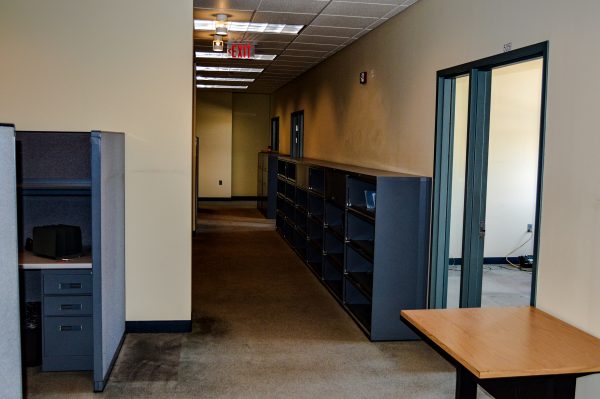
“We’ve had some interest in residential, and there is that push and there are some things happening as far as residential in the downtown,” Goodman explained. “And with a building of this size there could be a lot of residential units in there, but the costs to retrofit it as residential would be very high, and for that amount of money new housing could be constructed instead.
“Plus, with the open land that’s now available in the downtown, new construction will be explored there at a much more reasonable price than it would cost to perform that kind of work inside this building,” he said. “Downtown residential is a very good idea, but it doesn’t fit right now with the plans of Access Infrastructure.”
Commercial. Businesses with offices. People. That’s the vision owned by Access Infrastructure and the opportunity Goodman is presenting with each tour.
“I’m confident that there is enough interest because everyone knows the building, and there’s a lot of potential because of the amount of square footage. The first one in is going to start the momentum that’s needed get that building moving on the right track,” Goodman said. “If there are people walking in and out of those doors again on a daily basis, it makes everything about it more attractive.
“The first is going to be the hardest, I know, but then I believe the rest will fall into place after that,” he continued. “Once other potential clients see business being done again, they will be able to better envision their operations doing the same thing.”
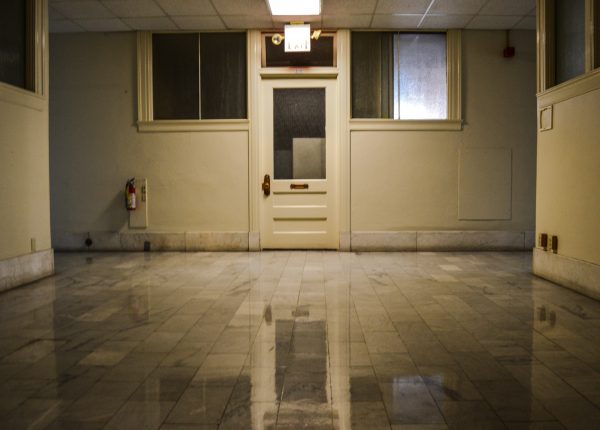
The Building Beer Built.
Not only was Henry Schmulbach a beer brewer, but he also was a merchant, the president of the German Bank that today is known as Wesbanco, the president of the Wheeling Bridge Co. and of the local telephone and streetcar companies. In the late 1800s, Schmulbach constructed and operated an amusement park on the hilltop overlooking the South Wheeling area, and he also financed the construction of an inclined railway to deliver patrons to and from the park’s rides.
Schmulbach began constructing this skyscraper in 1904, and it officially opened three years later. Most of the floors and walls are made of marble, and he included several personal touches, too, like the handcrafted doorknobs that feature a cursive, “S” on the top of each.
Local historian Ryan Stanton has thoroughly researched Henry Schmulbach, and he explained the legendary businessman constructed the structure to make even more money.
“For Henry Schmulbach, it was always about being an entrepreneur,” Stanton said. “He operated his businesses out of it, but then there were doctors’ offices, attorneys, insurance companies, and many others that filled all of those floors. The National Telephone Co. was on the top floor when it first opened.
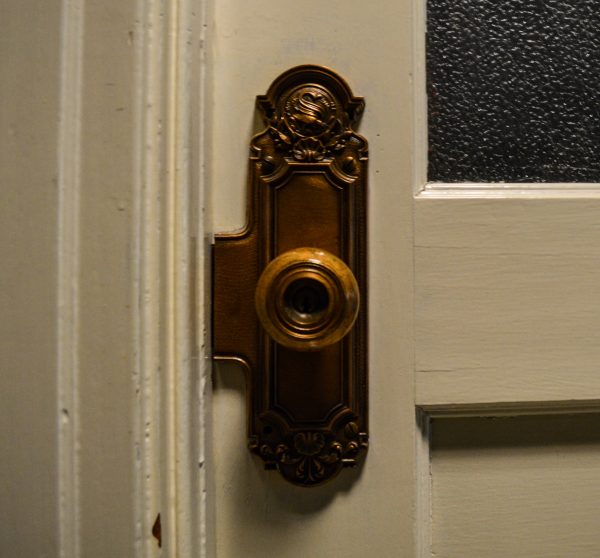
“And it was very common at that time when buildings were built to include those personal touches like the doorknobs that were once on every door of the Schmulbach Building,” he said. “That was some of Schmulbach’s ego shining through there.”
Stanton has attempted to research further the construction of the building, and what occurred following Schmulbach’s death in August 1915, but he has been able to find very little.
“I have always wondered what that construction site must have looked like while it was being built because it was right in the center of the downtown, and it was a very, very busy place at the time,” he said. “I’ve found it odd that there isn’t much history and not a single photo from that time.”
Schmulbach, Stanton confirmed, died of heart failure one year after the state of West Virginia enacted statewide prohibition.
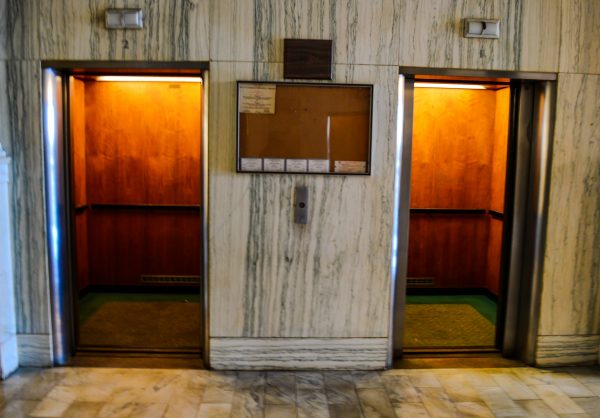
“He knew something was up before the state lawmakers did what they did in 1914 with banning alcohol because I’ve found some notes and letters of his that indicate he was considering moving the brewery to the state of Ohio,” he said. “It appears that Steubenville was going to be his top choice, but ground was never broken to do that.
“And in his obituary, it says that about one month before he passed away, he had gone home and told his wife that he visited his bank for the final time,” Stanton added. “Everything I have seen about his buildings was that he loved visiting them as often as he could. But he knew something was up, and I just can’t imagine how that last visit to the German Bank must have been on him.”
Tom Dawson today is a part-time butcher at Miklas Meat Market in Wheeling, and although he wasn’t around when Schmulbach operated his many businesses from the building’s top floors, he fondly recalls the days when Wheeling-Pittsburgh Steel employed hundreds inside the headquarter’s walls.
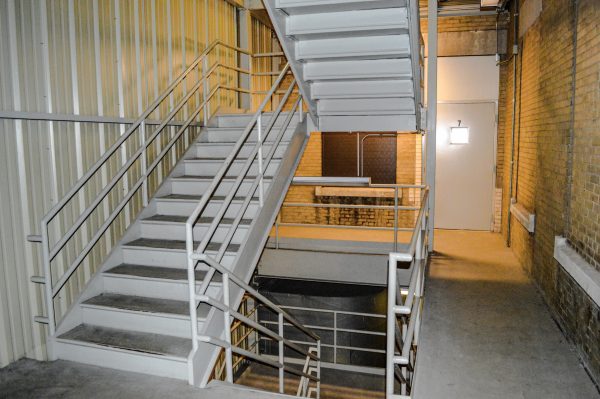
In those times, he owned and operated Dawson’s Meat Market on 12th Street, and he benefited from a few different rushes each week day, and he always had his display cases stocked by 5 p.m.
“The end of the day would always be the busiest because a lot of the wives would tell their husbands to grab this or that on their way home so they could make dinner,” said Dawson, who opened the butcher shop in 1971. “Many of the people who worked for Wheeling-Pitt during our busiest years used to park in the old Wharf Parking Garage that was where Heritage Port is now, and that meant they had to walk right by anyway.
“Those guys bought a lot of steaks, and a lot of pork chops, and they always grabbed a loaf of bread,” he said. “But I never really knew what was going to be popular on any given day, so I just made sure we had some of everything possible. At those times we were happy when it slowed down so we could get a new inventory cut and into the cases.”
But Dawson also felt the steel industry’s gradual decline, and he specially recalls the extended strike of 1996 that caused many employed on the steel company’s management level to report to work at one of the steel mills instead of the downtown location.
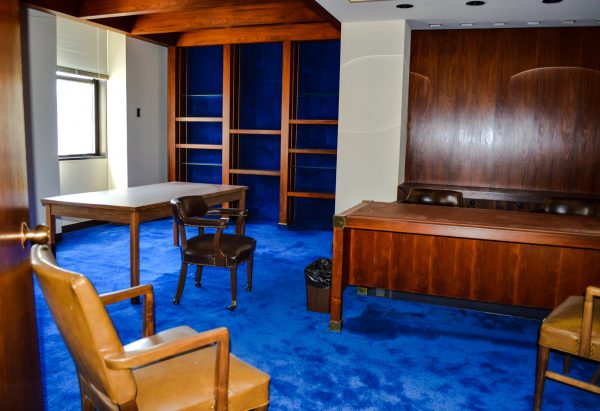
“That hurt us, and it took us by surprise,” he said. “We never expected anything like that then because it didn’t seem possible. Maybe the people inside that building expected it, but we never did.
“The worst part was after that strike finally ended, a lot of the business we lost never came back for whatever reasons. That’s something I still don’t understand today. Maybe because that strike got them out of their regular routine, they just forgot about it us because they found another place to buy their meats.
“But we adjusted, and I had to let some of the employees go, but we kept the doors open for a lot of years after that until the time arrived when it was necessary for me to close it for personal reasons. We still did a good business then, too, but it was never like when Wheeling-Pitt was in its prime again. We call those our golden years.”
Cindy Johnson, former general manager of the McLure Hotel who served in the lead position from 1996 until early January, said the lodging facility frequently welcomed guests who had business inside the headquarters.
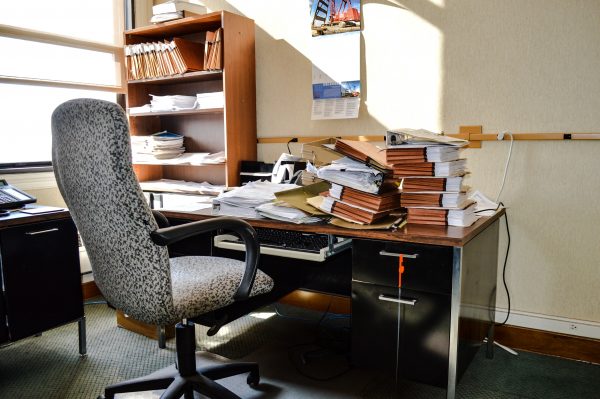
“I had the chance to meet people from all over the world because of Wheeling-Pittsburgh Steel, and my husband, Gary, was also employed by them at one of the mills,” she said. “I was always telling Gary about what I would hear from the people who would stay with us, and he would always explain to me why there were so many people from so many places coming into downtown Wheeling.
“The numbers did dwindle through the years, and then when RG Steel filed for bankruptcy, it was over,” she said. “But when that headquarters was full, so were the hotel’s storefronts because people needed shoes and greeting cards and those kinds of things, and it would be a great thing to see that happen again.”
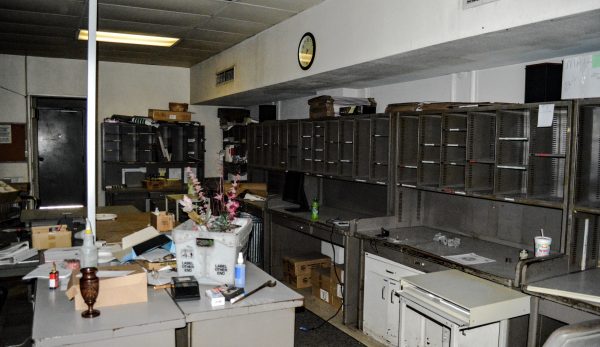
(Photography by Steve Novotney)
(One experience all must allow themselves is having a piece of Jim Oliver’s pie. …. https://weelunk.com/olivers-life-changing-decision-easy-pie/




